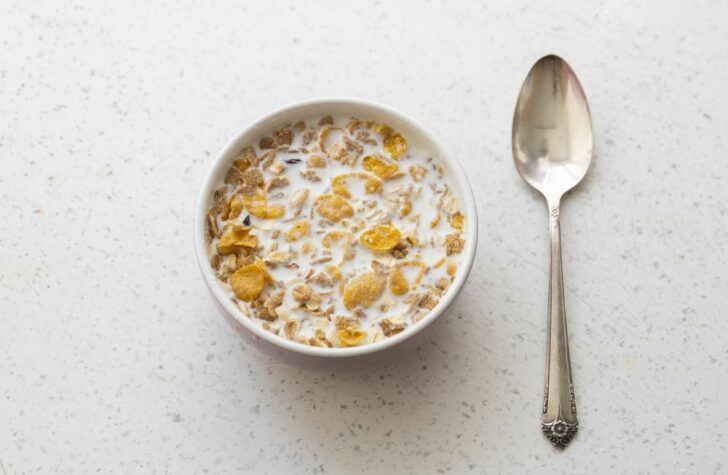High Protein Diet: A Comprehensive Overview

Introduction:
In recent years, the popularity of high protein diets has skyrocketed, with many individuals adopting this eating pattern to achieve weight loss, improve muscle gain, and enhance overall health. This article aims to provide a thorough and in-depth understanding of high protein diets, including their definition, different types, popularity, quantitative measurements, variations, and historical pros and cons.
1. An In-depth Overview of High Protein Diet:

A high protein diet is a nutritional approach that focuses on consuming foods rich in protein while minimizing the intake of carbohydrates and fats. Proteins are essential macronutrients that play a vital role in building and repairing tissues, synthesizing enzymes and hormones, and supporting various bodily functions. By prioritizing protein consumption, individuals aim to harness its numerous benefits, such as increased satiety, improved muscle mass, enhanced metabolism, and reduced risk of chronic diseases.
2. Comprehensive Presentation of High Protein Diet:
a. Types of High Protein Diets:
– The Ketogenic Diet: This diet entails consuming a low-carbohydrate, high-fat, and moderate-protein intake to induce ketosis, a metabolic state where the body primarily relies on fat for energy.
– The Paleo Diet: Also known as the caveman diet, it emphasizes whole foods, including lean meats, poultry, fish, fruits, vegetables, nuts, and seeds, while excluding processed grains and dairy products.
– The Atkins Diet: It involves minimizing carbohydrate intake while increasing protein and fat consumption during the initial phase, gradually adding carbs in subsequent phases.
– The Dukan Diet: This high protein diet is divided into four phases, aiming for rapid weight loss and long-term weight maintenance.
– The Zone Diet: It emphasizes balancing macronutrient ratios to control insulin levels, with each meal consisting of one-third protein, two-thirds low-glycemic index carbohydrates, and some fat.
b. Popularity of High Protein Diets:
– High protein diets have gained popularity among individuals seeking weight loss, athletes aiming for muscle growth, and those desiring better overall health.
– Celebrities and influencers have often promoted high protein diets, highlighting their benefits and positive outcomes.
– Additionally, the rise of social media platforms has played a significant role in popularizing these diets, with success stories and transformation photos drawing attention.
3. Quantitative Measurements of High Protein Diet:
To design a high protein diet suitable for individual needs, it is crucial to determine the optimal protein intake based on body weight, physical activity levels, and specific goals. Common quantitative measurements associated with high protein diets include:
a. Recommended Daily Allowance (RDA):
– The RDA for protein varies depending on age, sex, and activity level. For most healthy adults, it is set at 0.8 grams of protein per kilogram of body weight or 10-35% of daily caloric intake.
b. Protein Percentage:
– High protein diets typically consist of protein contributing to 25-30% or more of total daily caloric intake.
c. Protein Timing and Distribution:
– Individuals may also follow specific protein distribution patterns, such as focusing on evenly spreading protein intake throughout the day or consuming larger amounts in post-workout meals to optimize muscle protein synthesis.
4. The Differences between Different High Protein Diets:
While high protein diets share the common goal of emphasizing protein intake, they differ in terms of macronutrient composition, food choices, and overall approaches. The variations stem from different dietary philosophies, diverse health objectives, and individual preferences. Factors that differentiate high protein diets include:
a. Carbohydrate Restrictions:
– Some high protein diets, like the ketogenic and Atkins diets, significantly restrict carbohydrate consumption, leading to a state of ketosis.
b. Fat Intake:
– The amount and types of fats consumed may vary among different high protein diets. For example, the paleo diet encourages healthy fat sources, while the Dukan diet limits dietary fats in certain phases.
c. Promoted Food Choices:
– High protein diets can differ in terms of food selection, with some emphasizing lean meats, poultry, fish, and plant-based protein sources, while others allow a wider range of foods, including high-fat options.
5. Historical Overview of Pros and Cons of High Protein Diets:
a. Pros:
– Weight Loss: High protein diets have shown efficacy in promoting weight loss, primarily through increased satiety, elevated calorie expenditure during digestion, and preservation of lean muscle mass.
– Muscle Gain: Adequate protein intake is essential for supporting muscle growth and repair. High protein diets can aid in muscle protein synthesis, especially when combined with resistance training.
– Reduced Chronic Disease Risk: Research suggests that high protein diets may help improve blood sugar control, blood pressure, and lipid profiles, thereby reducing the risk of conditions like type 2 diabetes and cardiovascular diseases.
b. Cons:
– Nutrient Imbalance: Depending on the specific high protein diet followed, individuals may face challenges in meeting other nutrient requirements, such as fiber intake, phytonutrients, and certain vitamins and minerals.
– Potential Health Risks: Prolonged adherence to very low carbohydrate high protein diets, such as the ketogenic diet, may lead to nutrient deficiencies, hormonal imbalances, and adverse effects on certain metabolic markers.
– Long-term Sustainability: Some high protein diets may be challenging to sustain in the long run due to restrictions, limited food choices, and potential social implications.
Conclusion:
High protein diets have gained immense popularity for their potential benefits in weight loss, muscle gain, and overall health improvement. Understanding the various types, quantitative measurements, differences, and historical advantages and disadvantages of high protein diets is crucial in making informed dietary choices. However, it is essential to consult healthcare professionals or registered dietitians before embarking on any dietary changes to ensure individual nutritional needs are met adequately.

















